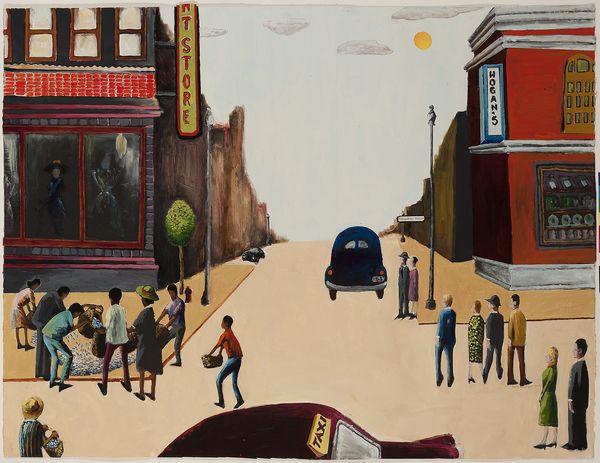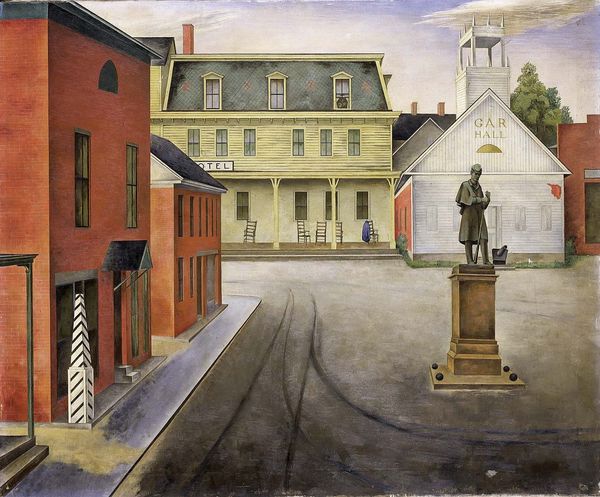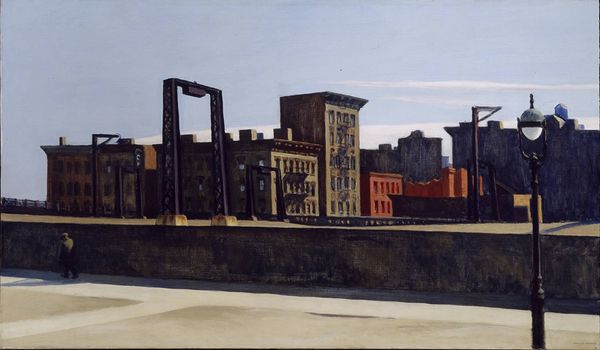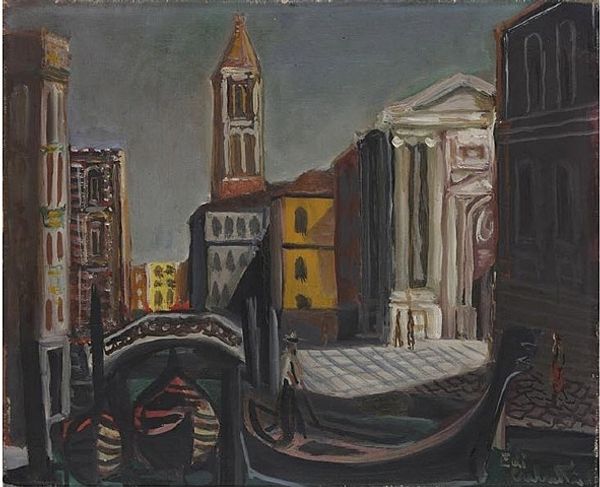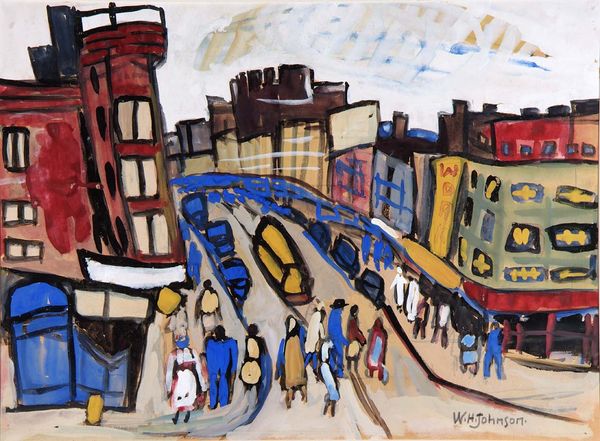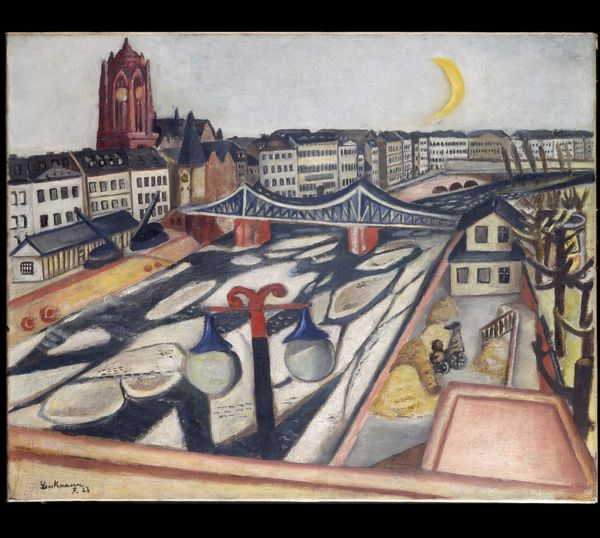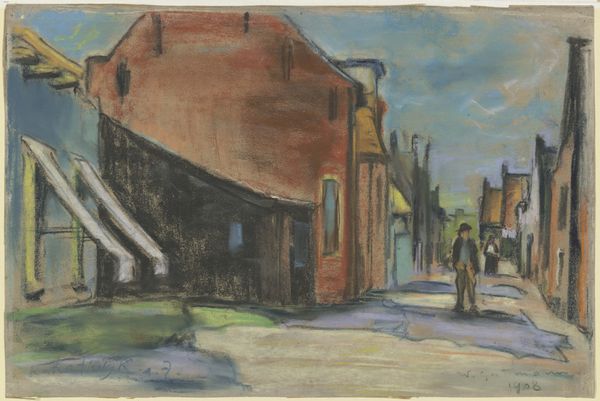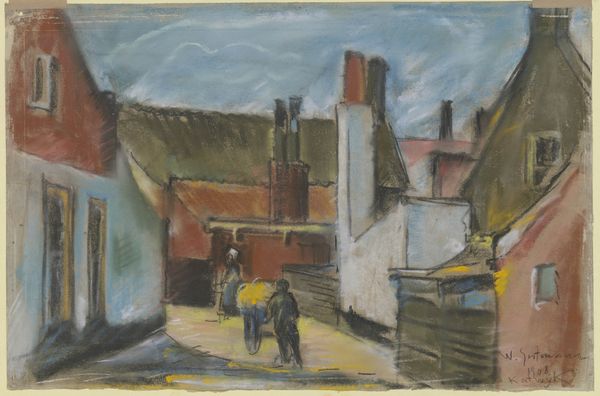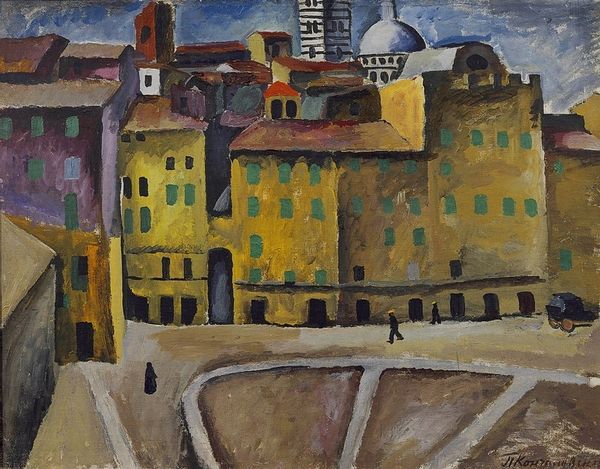
Dimensions: 24 x 30 in. (61 x 76.2 cm)
Copyright: Public Domain
Curator: Good morning. We are standing before "Docks on Sunday," an oil-on-canvas work completed in 1941 by Joseph De Martini, here in the collection of the Metropolitan Museum. Editor: It projects such an oddly weighted calm; despite all these human figures scattered about, there's a sense of isolated contemplation, don't you think? The darker shades, particularly the almost uniform ground plane, create a stage-like feel. Curator: That feeling certainly chimes with the artistic milieu of its time. De Martini belonged to the Ashcan School, a movement focused on depicting everyday life, especially in urban settings. Their aesthetic was rooted in realism. Editor: And the perspective—almost aggressively direct—forces one's gaze right into this constructed tableau. I find the palette so curious. It’s like muted theatrical lighting – amber, sienna, with this surprising jolt of cadmium in some spots. Curator: That might reflect De Martini’s own ideological positioning during a time when America sought to redefine itself through industry and labor, versus the global political stage. Note the arrangement, the deliberate flattening. Do you see the relationship to similar works in cityscapes of the time? Editor: Certainly. The flattened perspective adds to the artificial, stagey feel. How does the placement of these figures—seemingly arranged yet convincingly mundane—support its thematic content? I detect visual clues of a population at rest from labor on their designated day. Curator: It underlines the concept of leisure amidst urbanity. The buildings, especially their architectural lines and forms, frame these interactions, indicating the push and pull between built environments and spontaneous human interaction. Editor: Yes, how the rigidity of form interacts with the softness of its subjects makes an intriguing contrast that suggests this interaction between societal rules and life, lived as experience. And what of that sky? The depth feels almost anachronistic amid these flat expanses of form. Curator: Consider that perhaps the sliver of sky signifies more of the aspiration for space outside the immediacy of an ever crowding landscape, for this specific era. In conclusion, a closer inspection reveals not merely a captured scene, but also this tension and visual discord playing together in unexpected balance. Editor: I would agree; this dissonance speaks of quiet moments within historical forces. De Martini urges an emotional encounter between these forms and historical context, rather than demanding singular interpretative stance from its beholder.
Comments
No comments
Be the first to comment and join the conversation on the ultimate creative platform.
